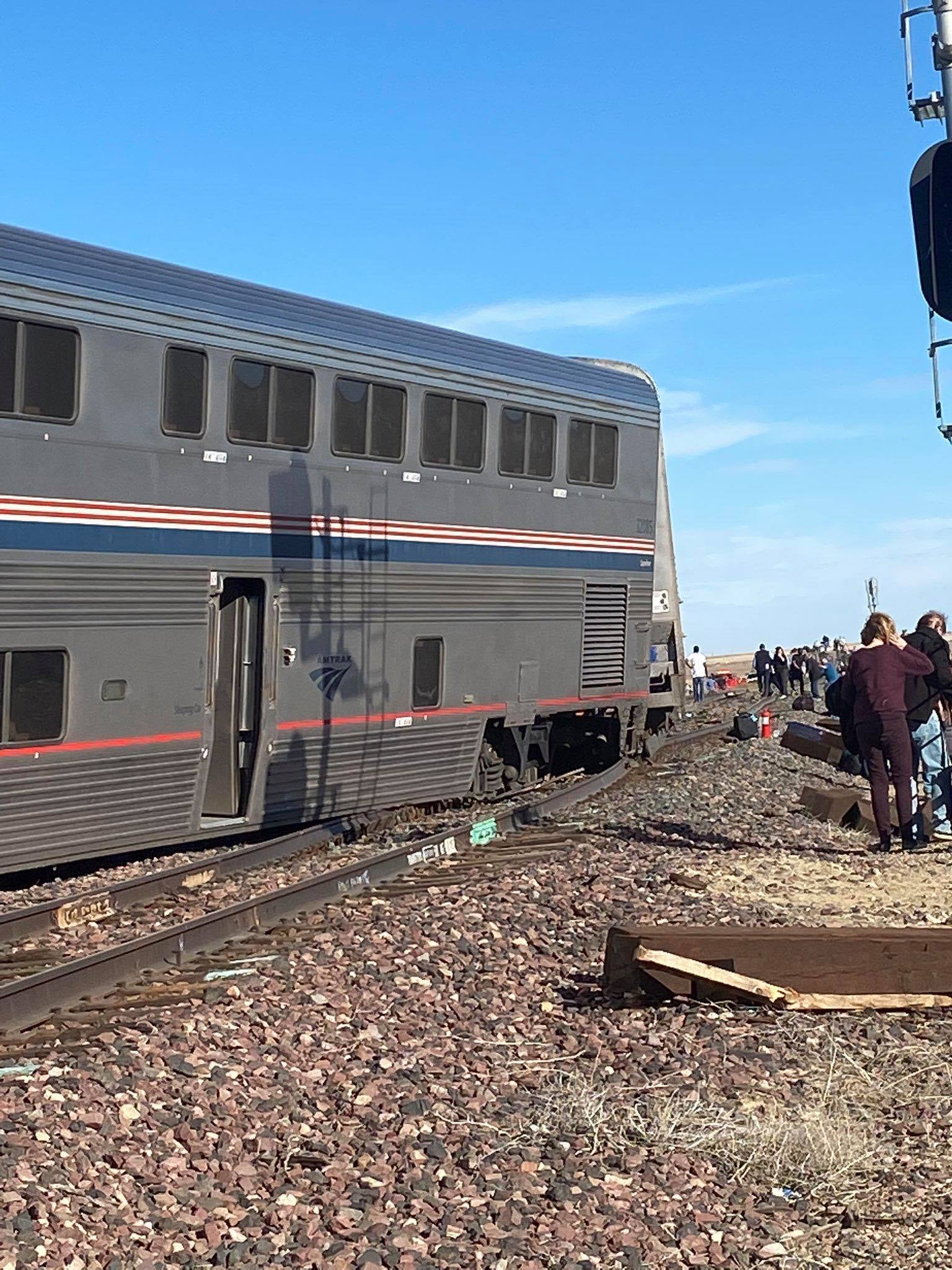
HAVRE, Mont. – Amtrak confirms three deaths in the Saturday derailment of the westbound Empire Builder near Joplin, about 50 miles west of Havre. The train, which originated in Chicago on Friday, had 141 passengers and 16 crew members onboard. The train consisted of two locomotives and 10 cars, with eight of those cars derailing, according to Amtrak.
Media reports indicate that about 50 people are injured.
The incident occurred about 4 p.m. at the east end of Buelow siding, according to photos of the scene. Buelow is located at milepost 1015.8, between Havre and Shelby on BNSF Railway’s Hi Line Subdivision.
“We are deeply saddened to learn local authorities are now confirming that three people have lost their lives as a result of this accident. There are also reported injuries among the passengers and crew members travelling on the train,” spokesman Jason Abrams tells Trains News Wire. “Amtrak is working with the local authorities to transport those who were injured to medical care, and to safely evacuate everyone else at the scene.
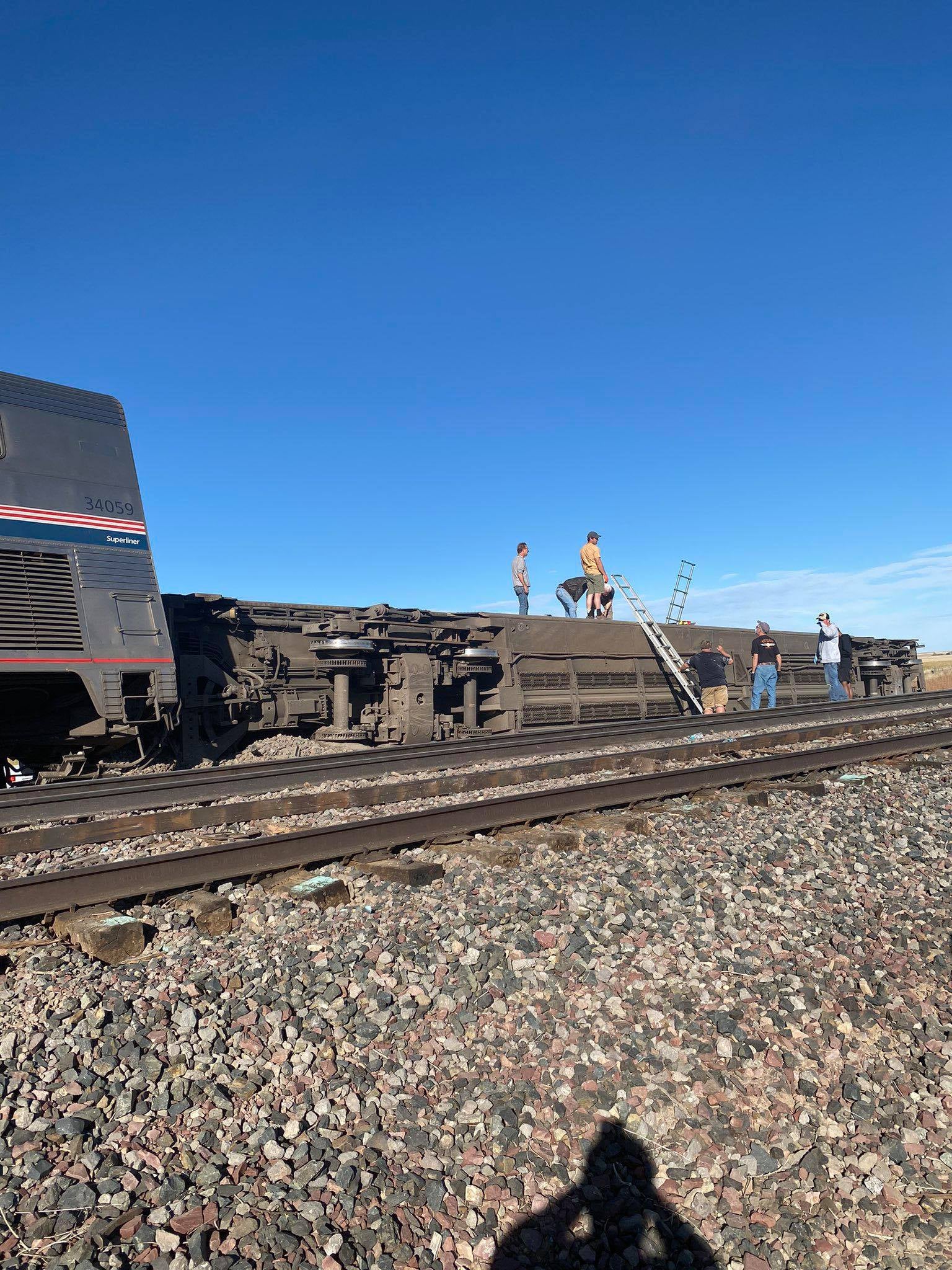
“Our Incident Response Team has been initiated, and we are sending emergency personnel and Amtrak leadership to the scene to help support our passengers, our employees and their families with their needs.”
The Empire Builder operates between Chicago and Seattle and Portland, Ore. The trains operates as one east of Spokane, Wash., but west of there splits into two sections, trains 7 and 8 to Seattle and trains 27 and 28 to Portland. Typically, the Portland cars operate at the rear of the combined train. It is equipped with bilevel Superliner equipment.
Photos of the train passing through Sturtevant, Wis., the day before the derailment show it to have a second Superliner Lounge car at the end, likely deadheading. This makes a total of 11 cars, including the Viewliner baggage car. However, it is unclear if this car was removed prior to the derailment or omitted from Amtrak’s car count.
Analysis of the derailment photos appears to show that only the cars at the rear of the train, the four cars of the Portland section including at least one Sightseer Lounge, two coaches, and sleeper, fell on their sides.
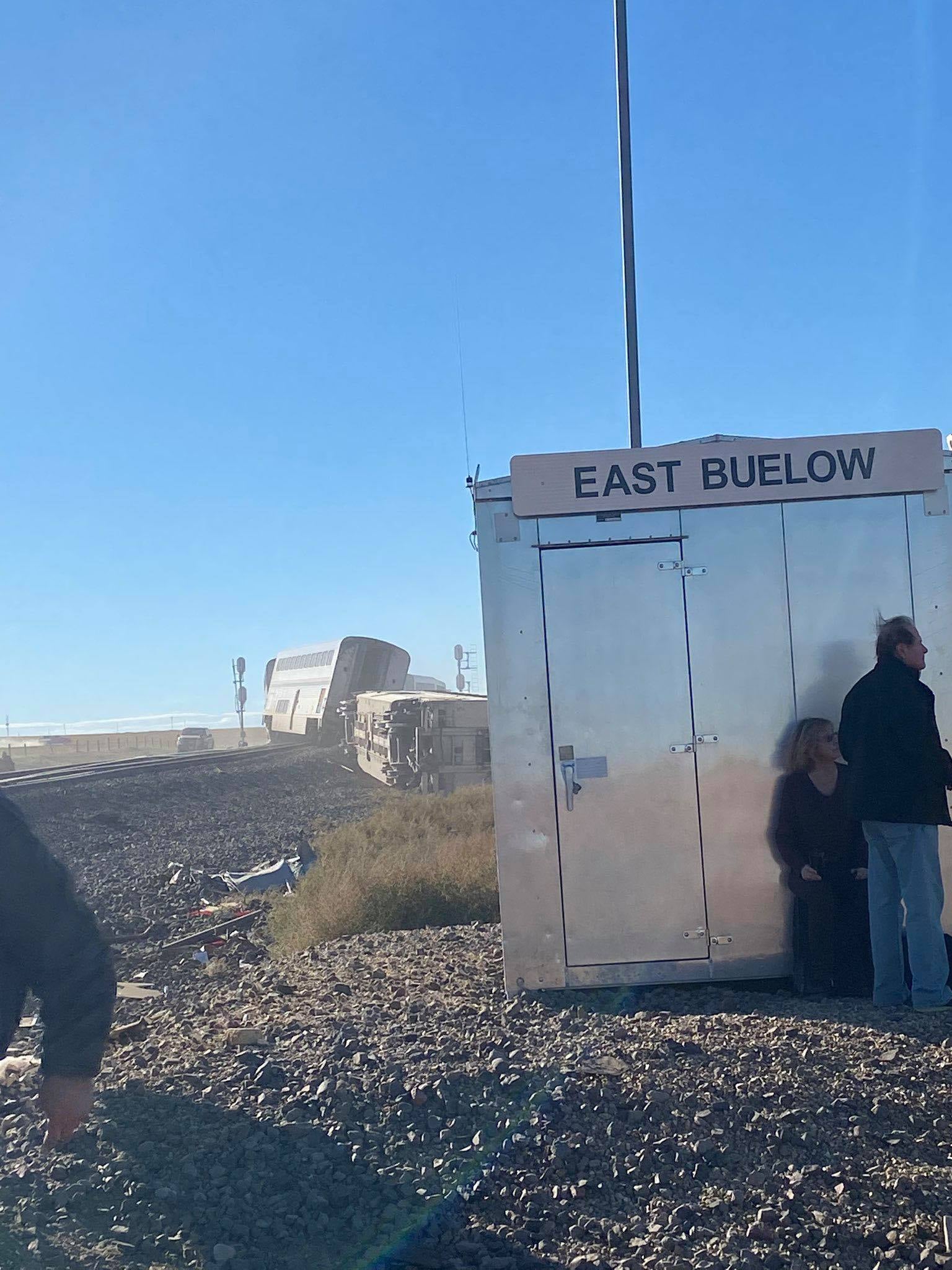
As a result of the derailment, Empire Builder trains originating on Sept. 25 are cancelled between Minot and Shelby. Additionally, on Sept. 26, westbound train 7 will terminate in St. Paul, Minn., and eastbound train 8 will originate there. No substitute transportation is available for travel west of St. Paul.
The National Transportation Safety Board has sent an accident investigation team to the scene, and the Federal Railroad Administration is launching its own investigation as well.
Amtrak has deferred future comment on the incident to the NTSB.
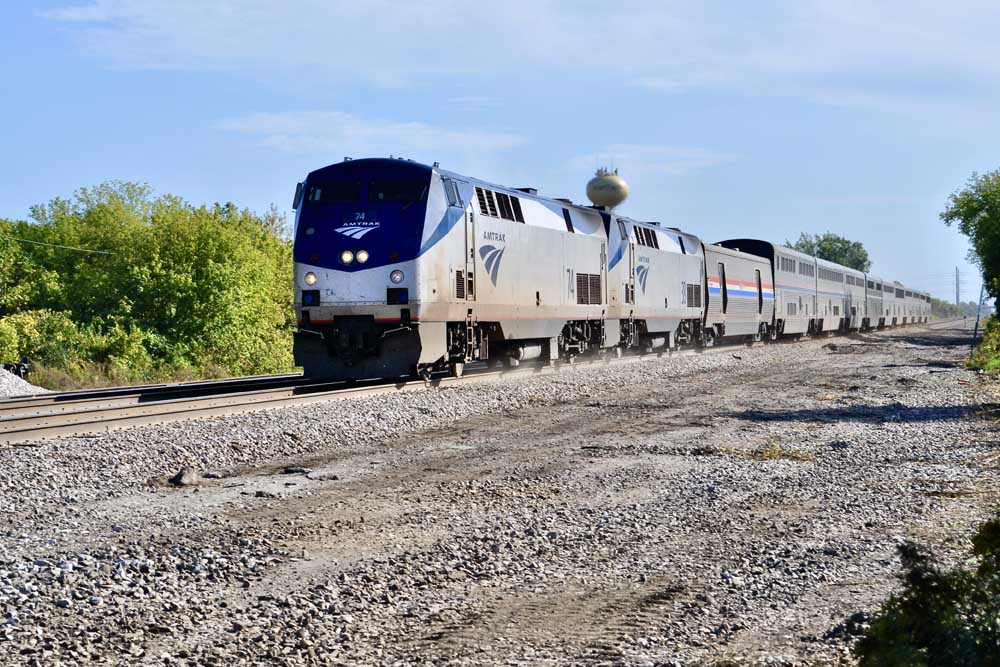
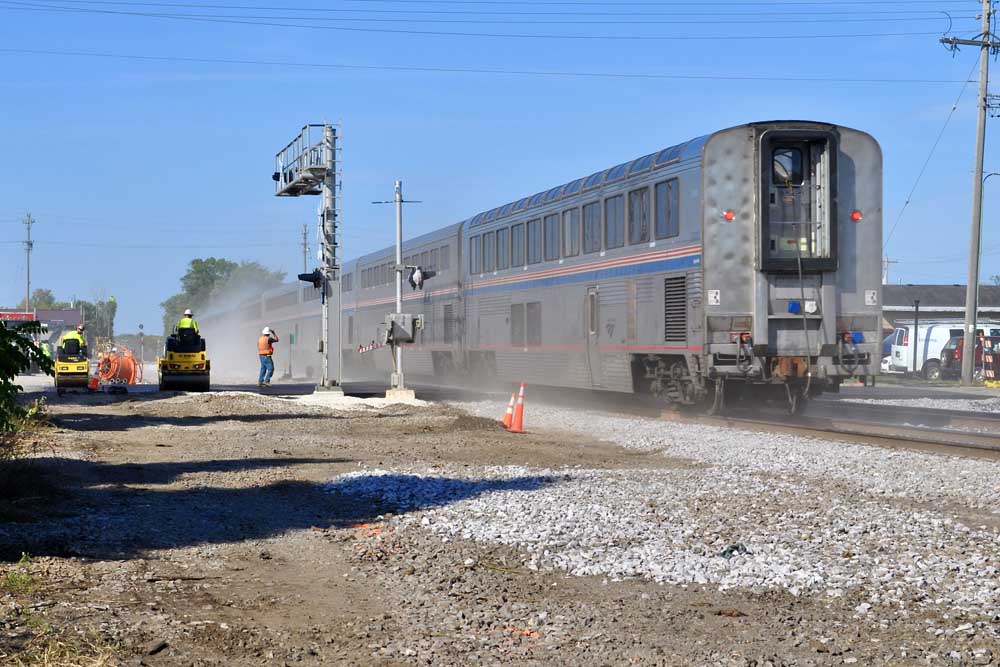






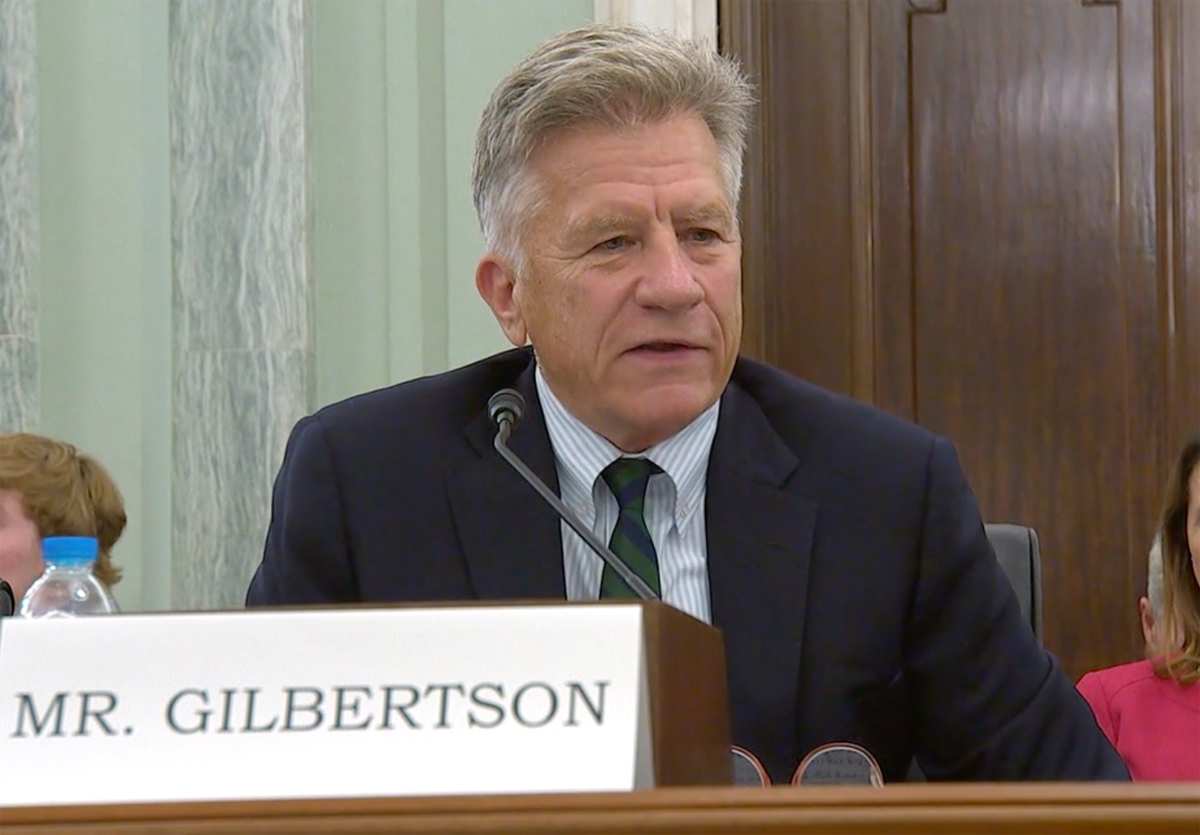
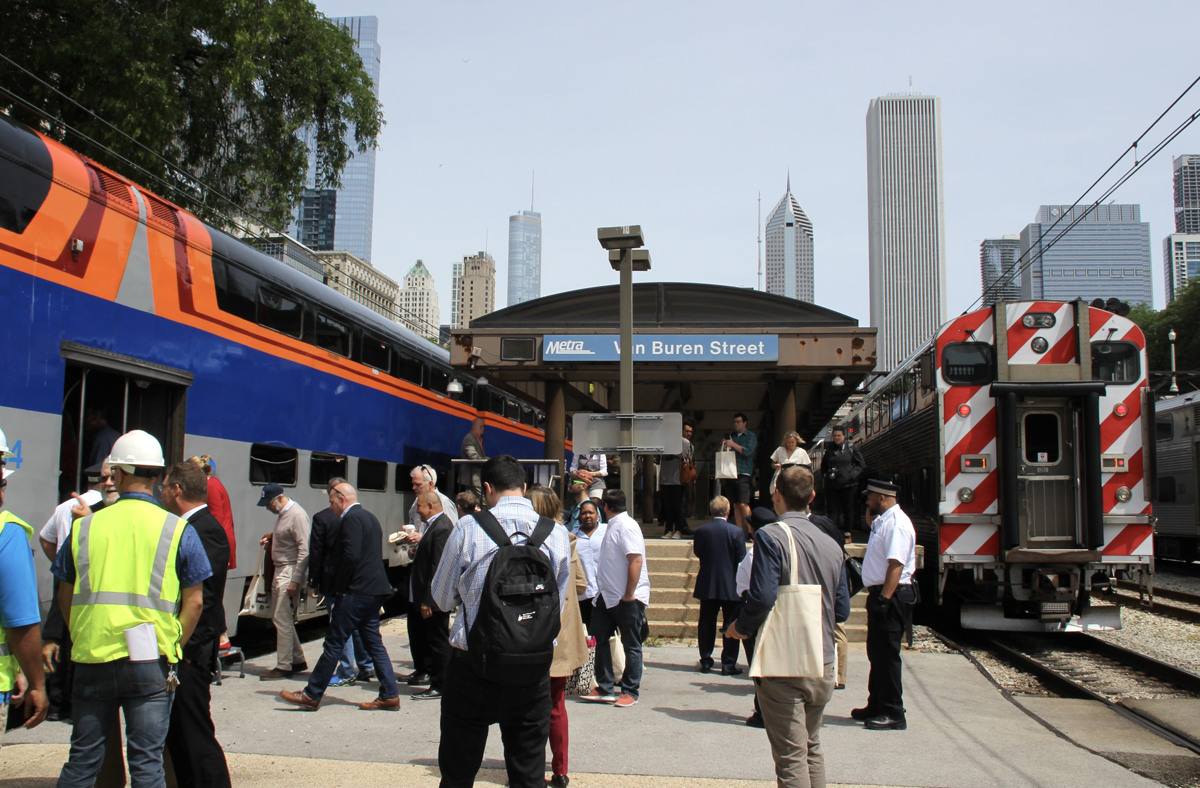
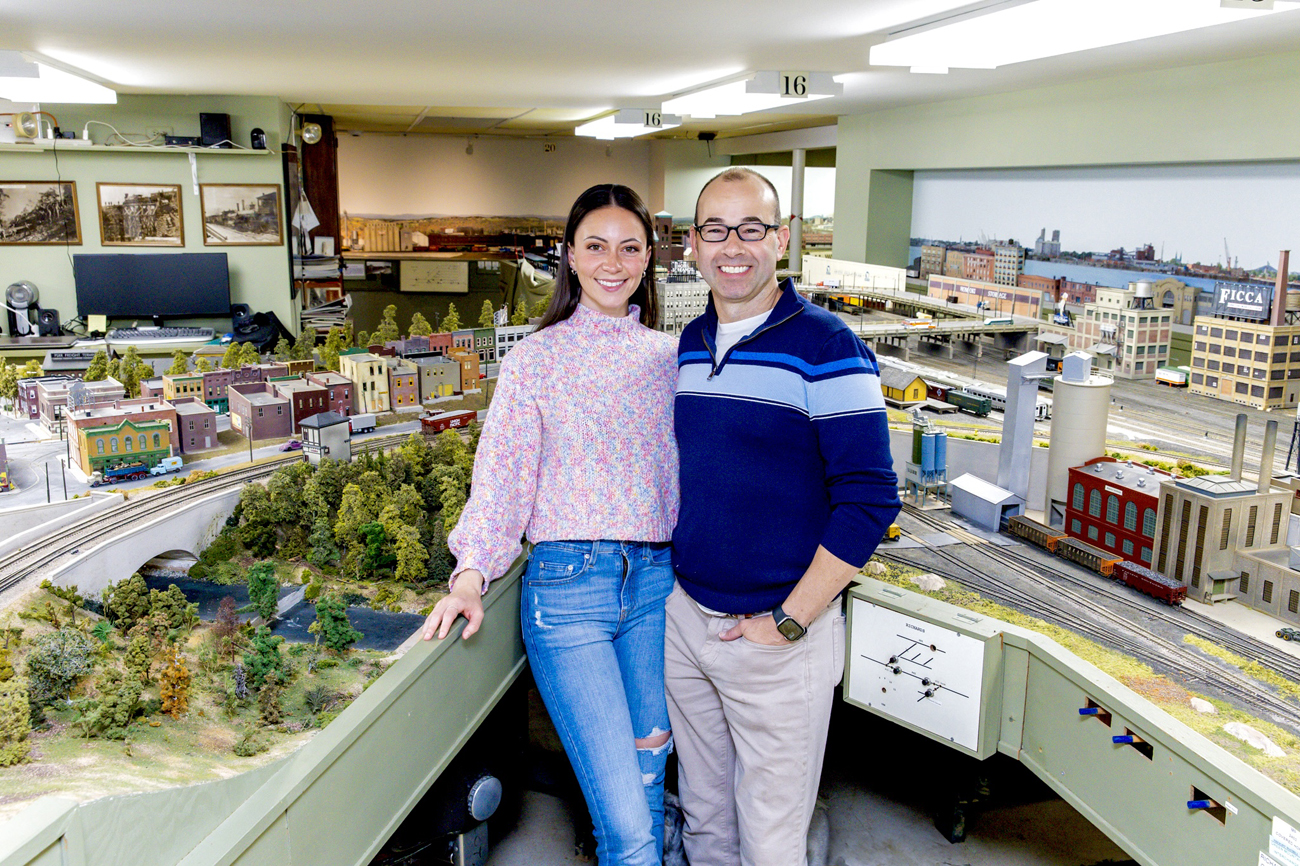
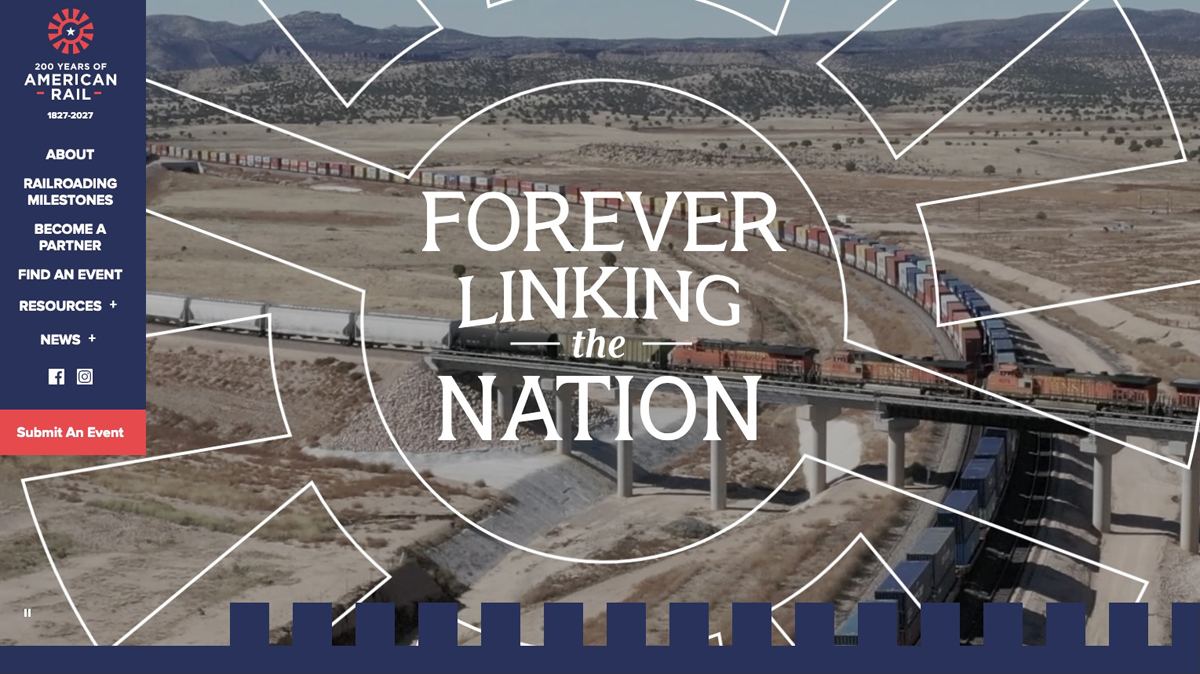




Why, more than four months since this horrific accident, is there still no word from anyone (particularly the NTSB) on the cause?
There appears to be only one or two aerial photographs, taken pre-salvage operations, that show the post-crash configuration of all ten cars plus the two locomotives.
The still photos and various videos appear to permit identification of the consist and the sequence, possibly as follows;
1) Locomotive on the main;
2) Locomotive on the main;
3) Baggage car on the main;
4) Transition sleeper on the main;
5) Sleeper on the main (last of the intact (coupled and on track) part of the consist);
6) (completely detached) Sleeper on the side (south) track (seemingly on the rails);
Then come the north (for the main) and south (for the siding/secondary track) side signal towers for eastbound trains.
7) Diner on the main but with the wheels of the rear truck off the rails to the south;
8) Derailed and moderately leaning coach (Seattle section) straddling the main with wheels of the rear truck north and wheels of the leading truck south.
9) Derailed and laying-on-its-side Observation car (a/k/a Sightseer lounge).
Then comes the turnout/switch; at just about the base of the turnout is the East Buelow equipment shed on the north side and a bit to the east is the signal tower on the south side for westbound trains.
Then comes the Portland-bound set of seemingly still-coupled cars lying on their sides that appears to be as follows:
10) Coach
11) Baggage Coach;
12) Sleeper.
What is rather striking is that, unlike the Sightseer lounge, the trucks of these last three cars are facing to the north (down the embankment) away from the single track main. The rails immediately to the east over or through which the entire train had passed are noticeably bellied wide apart.
How did the trucks of the trailing three cars end up facing away from the main line? Two explanations seem logically (but perhaps not physically) possible: 1) The cars derailed and the roofs fell south toward the track and the cars slid down the embankment; or 2) The cars derailed, the roofs fell north and the three cars horizontally/longitudinally somersaulted down the embankment longitudinally rotating 270 degrees or so. Center-of-gravity considerations and the fact that the cars still appear to be coupled would seem to strongly favor the first explanation. However, judging from the seeming crumple damage to the roofs of all three cars, perhaps the second explanation is the correct one (I’m not a physicist or mechanical engineer) but, if true, far more terrifying and injurious for the occupants.
Donald, evidently you cant grasp what I said. I have been a railroader for going on 28yrs now, so I do happen to know east from west (and north from south for that matter).
The cars in the images in this article are in fact west of the switch, and yes those images were taken in the late afternoon as you mentioned but those are not the overturned cars I was referring to in my previous post. If you would have noticed, I mentioned three overturned coaches and in these images there is only one. None of these images show the last three overturned cars that are on their sides a few hundred feet EAST of the switch at EAST Buelow. The images I was referring to were overhead images from the Billings Gazette that show the derailment site from above. In those images you can see the three overturned coaches east of the switch, out on the single track, and that those photos were taken the next morning after all of the MofW and Side booms showed up. That is also why I stated that this derailment probably happened before 7 even got to the switch, and the NTSB has said as much. If 7 had split the switch at 75mph, those cars would have been all piled up around the control point by the time it stopped, not three overturned cars left behind a few hundred feet back
Well,ok, then. And by the way, the STB investigators say the derailment happened before the switch, which I DO NOT dispute whatsoever. And, additionally, why didn’t you say you were looking at different pictures from a outside source. All I have are these photo’s so excuse me for living.
This is yet another confirmation of what I’ve believed for many years: trains (as well as buses) should provide seat belts for passengers. The three people who died were victims of being thrown around inside the car because they weren’t belted. And similar comments for the injured. Had they been belted, there would have been no serious injuries. It is unconscionable that we use financial alibis to justify not providing seatbelts. I’ve heard all the arguments, and they are stupid–how much is a human life worth? I heard all the same arguments before seat belts were made mandatory for automobiles.
And, by the way, the fact that we allow kids to ride in school buses without seat belts is equally indefensible.
If I might speculate a little here, as soon as I saw the photo in yesterday’s Wall Street Journal, I zeroed in on the switch. Some of the equipment was on the siding and some still on the main which strongly suggests that the train “split the the switch”.
However, if I turn out to be right about that, the next question is, how could that have happened? Obviously the switch would’ve had to have been defective to do that but if it weren’t closed properly, that should’ve fouled the block signals.
Regards,
Fred M. Cain
Donald, take a look at the overhead again. Given your explanation and the angle of lighting, that would mean that the train was headed east and that the control point would be the west end of Buelow siding, but its not. Given the presence of all the MofW equipment and the fact that the side booms are already there, that tells me those images were taken the following morning and not the afternoon of the derailment. So, those three cars on their sides are in fact east of the switch.
No, sir, you are incorrect. Please read the first sentence of the above story; “Amtrak confirms three deaths in the Saturday derailment of the westbound Empire Builder near Joplin, . . . .”. What part of “westbound” is hard to understand? And please explain to my why, in the picture with the West Buelow control building in it, are there people present that are obviously NOT railroad or even locals (the woman looks like she is setting on her luggage) but, instead are most probably passengers so why are passengers still at the derailment site the next morning? Also, the control building is, from Google Earth, on the north side of the trackage and therefore the cars are to the west of the switch. Plus, all the pictures of the cars on their sides show two tracks which means they are west of the switch. Period. Again, I am not saying the switch caused the derailment. It may not have.
Hate to say it but Amtrak was due. The number of derail events on the freight side had become a weekly report on News Wire. Blame whatever, but I still can’t find anyone publishing statistics on derails since the advent of PSR.
My point? No matter how robust the rail, placing more repeated stress on any object, especially ones that are designed to be flexible without a period of “rebound” or rest is more inclined to fail. If levels of maintenance remain static, but you put more work on your physical plant, it will tend to fail more often.
Everyone is looking at the track and switch around the siding and focusing on that. That doesnt explain the three coaches on their sides a couple of hundred feet EAST of the switch. That tells me the problem started back there someplace.
From my examination of the photos and the location on Goggle Earth, specifically the photo with the East Buelow contol building in it and the shadows showing the sunlight coming from the left which indicates the photo is facing west, the overturned cars are just to the WEST of the switch. However, even given that fact, the derailment may have been cause by something east of the switch.
Bad of me to use a tragedy to make a point … I’ll just have to be bad I guess though I could have selected a better day. I can’t recall seeing any statistic of Amtrak’s fatality rate per passenger mile, compared to air transport per passenger mile. Factor out 9/11 terrorism or a spate of unexplained crashes in the late 1990’s over the oceans I personally believe may have been caused by bombs, air transport has been remarkably safe over recent decades. Southwest Airlines for example is up to a total of two fatalities in its entire history (one airline passenger and one automobile passenger hit by a SWA airplane out of control at Midway Airport). Amtrak with a tiny fraction of SWA’s passenger miles is doing many times worse than that.
Another factor is that if there is a crash, each mode has its own own dangers. Obviously an airplane falling out of the sky will kill everyone. Rail doesn’t have that problem – but rail lacks seat belts. Rail also lacks any equivalent of what airlines require during the more dangerous segments of the flight: passengers confined to seats, seat backs upright, seat belts snug, personal baggage stowed, tray tables folded up.
You’re right, Charles, you could have selected a better day. Guess you were waiting for this one so you could unburden yourself. You’ve been an unpaid flak for the airlines here before. Find another venue, please.
Have a good day, George!
I’m with you Charles. I wonder how many of the people on this train, killed, injured or uninjured were riding the train because they have an irrational fear of flying. Automobile and bus travel is obviously more dangerous than train but comparing Amtrak to the airlines is eye opening.
I don’t know any more right now than anyone else, and I’m not a Stress Engineer who knows the mathematics, but I always thought that tight-lock couplers on passenger cars had two purposes: 1. To eliminate slack action, for passenger comfort because there was plenty of pulling power, and 2. To hold the draft of cars together and in line in the event of a derailment, rather than one or more popping uncoupled and turning over, as with, say, “E” couplers. Therefore, the stress that ripped these cars loose so they could turn over must have been enormous and beyond the safe design limits of the couplers-draft gear on the cars.
My first guess would be a picked switch. But I’m curious about the pic where the inside rail is rolled over.
James I don’t know if that rolled over rail is the siding or a unused siding. Looking at google maps I can’r zoom in enough to see if at one time there were three tracks there but there is a large pile of old ties there and it is a 2021 map. As Thomas said there seem to be a lot of track in that area. If that is the siding it looks like it was in tough shape from the get go. I wonder if they were replacing rail and that’s the old one if so the main does not look to level either.
It looks as if the front of the train is on the main line and stayed on the tracks and the middle of the train derailed at the switch.
Went through Joplin on highway 2 Wednesday and it looked like the BNSF was
doing a lot of track work in that area.
Heavy freight traffic on that line, especially now at harvest time in Montana.
Lots of unit grain trains.